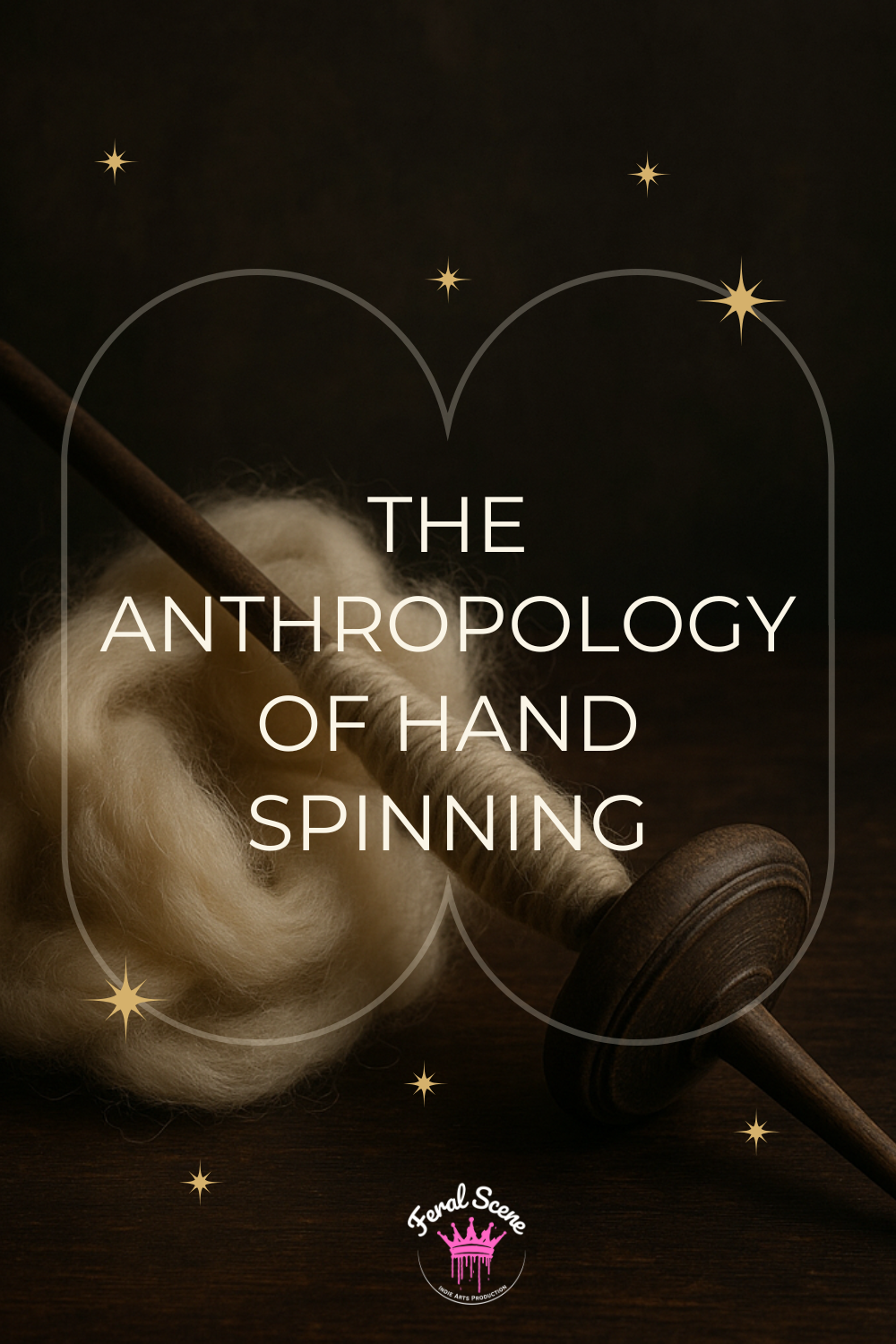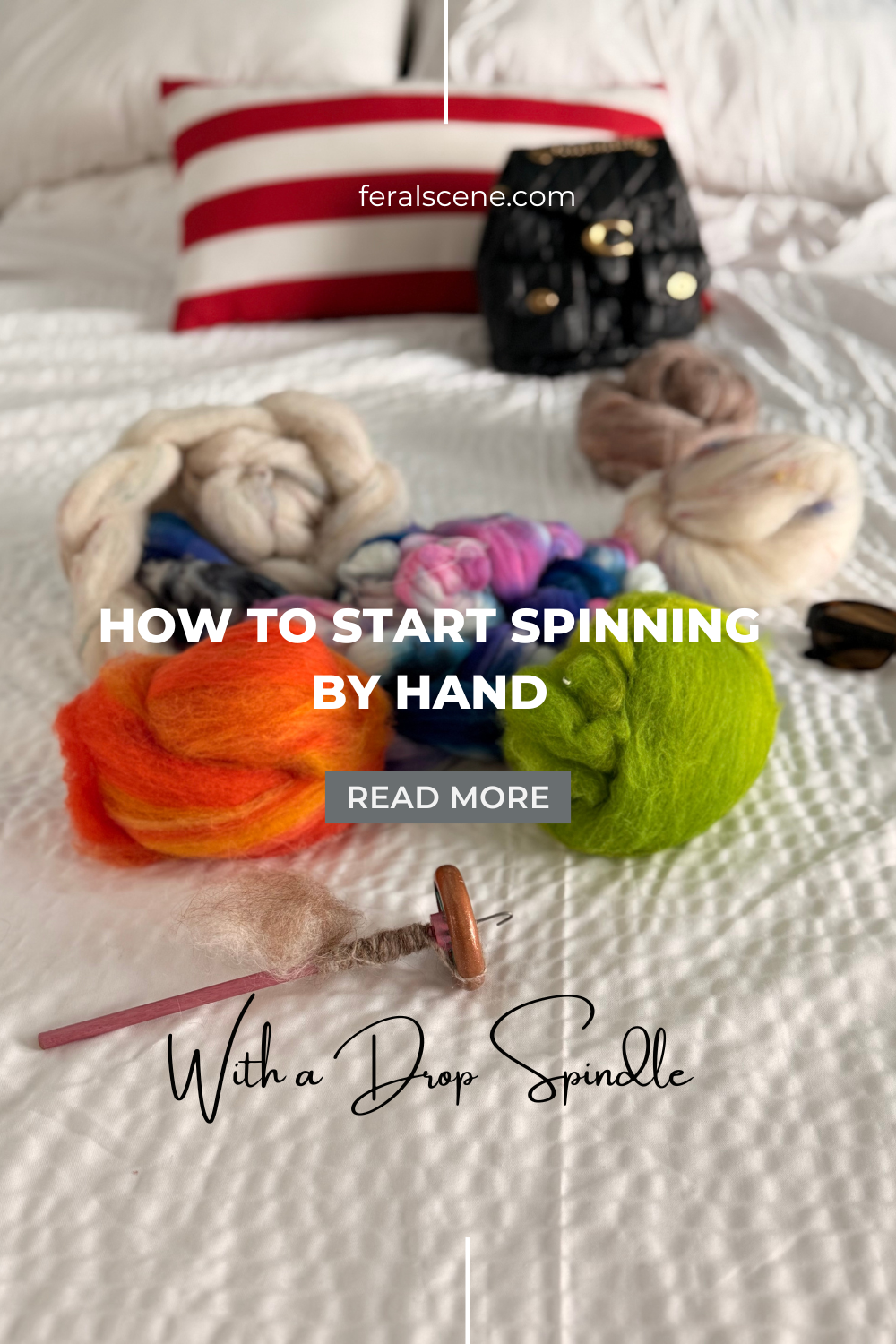How to Start Spinning by Hand ; The Original Slow Craft
The Anthropology of Hand Spinning
For tens of thousands of years, humans have twisted fiber into thread, long before the written word, before agriculture, before the wheel. In nearly every culture across the globe, spindle whorls and fragments of handspun yarn have been unearthed beside ancient hearths, evidence of the quiet but essential act of textile creation. Spinning is more than a craft; it is a throughline that connects us to ancestors who worked with intention and rhythm, binding fiber into structure, chaos into form.
In a time when attention is splintered and speed is glorified, spinning by hand offers a powerful return to presence. It’s a ritual, a meditation, and a deeply human act — and it’s still accessible, one spindle and one tuft of wool at a time.
Preparing the Fiber
Before you even pick up your spindle, take time to prepare your fiber. This step is called pre-drafting — gently pulling the fibers apart so they slide more easily when you spin. It helps prevent tangles and makes your first spins smoother. For beginners, natural wool batts (like those in our Feral Scene subscriptions) are perfect because they have a soft, open texture that’s easy to work with.
Attaching the Fiber (No Leader Needed)
Many tutorials teach using a leader thread, but you don’t actually need one. You can attach your fiber directly to the spindle shaft by simply twisting a small section of wool into a point, wrapping it around the spindle hook ( like a sandwich !), and letting the natural twist catch. It feels a little clumsy the first few times, but it’s one of those foundational hand movements that becomes instinctive with practice. The goal is just to make enough ugly but sturdy yarn to twist around the base of the whorl and back up a couple times. That's the " attaching" part. After that you can worry about making your yarn the size and style you want.
The Park and Draft Method
This is the easiest way to learn the rhythm of spinning. Hold your spindle in one hand, and give it a spin to build up the twist. Then, with the spindle “parked,” under your armpit or between your knees use your other hand to draft out the fiber — gently pulling and letting the twist travel up into the fibers. When it feels like you've run out of arm length or fiber twist, stop and wind the new yarn onto your spindle. It’s slow, steady, and forgiving , this is how I always teach people in person and online for starters!
The Weighted Drop Method
Once you’re comfortable, let the spindle hang freely and spin on its own. The added weight will naturally draw out the fibers and create a more continuous flow. You’ll feel the difference immediately — the spin lasts longer, the twist evens out, and you start to sense the dance between gravity and tension. This is where spinning starts to feel effortless. My #1 tip with this is don't get stuck looking at the spindle spinning and working about the direction or speed. Just worry about what your hands are doing with drafting and when it slows down and starts to stop rotation just wrap it up and start again.
Why Spin by Hand?
There’s a reason we use the word “spin” to describe storytelling, or the word “thread” to mean connection. Spinning isn’t just a way to make something; it’s a way to understand how all things come together: strand by strand, moment by moment, gesture by gesture.
To spin is to participate in an unbroken lineage of makers who created beauty, warmth, and resilience with their bare hands. Whether you’re learning for the love of texture, the meditative flow, or the rebellious act of slowing down, welcome. You’re now part of one of the most ancient stories ever told.
Spinning with a drop spindle isn’t just about making yarn it’s about slowing down enough to connect with your materials. It’s tactile meditation. Every twist, draft, and wind-on teaches you patience, focus, and rhythm. And as your hands learn, your mind quiets. You start to notice the texture of the wool, the sound of the twist, the way light catches on a new strand of yarn.
Hand spinning reminds us that mastery doesn’t come from speed. It comes from presence.
Ready to get Started ?
If you want to follow along with these steps, I’ve shared short demonstration videos covering each part of the process:
how to predraft fiber batts for yarn spinning
how to attach wool to a drop spindle without a leader thread . how to drop spindle video
How to drop spindle with the “park and draft method for beginners
how to drop spindle with weighted to the floor method
Pre-drafting
Attaching the fiber with no leader thread
Park and Draft method
Weighted drop method
You can find them on my TikTok, YouTube Shorts, and Pinterest pages.
Want to go deeper? My full Drop Spindle Course walks you through everything you need to know to confidently create your own yarn from start to finish.
Explore: The Drop Spindle Course → or browse our Natural Batt Subscriptions to start spinning with hand-prepared fibers that make learning a joy.


